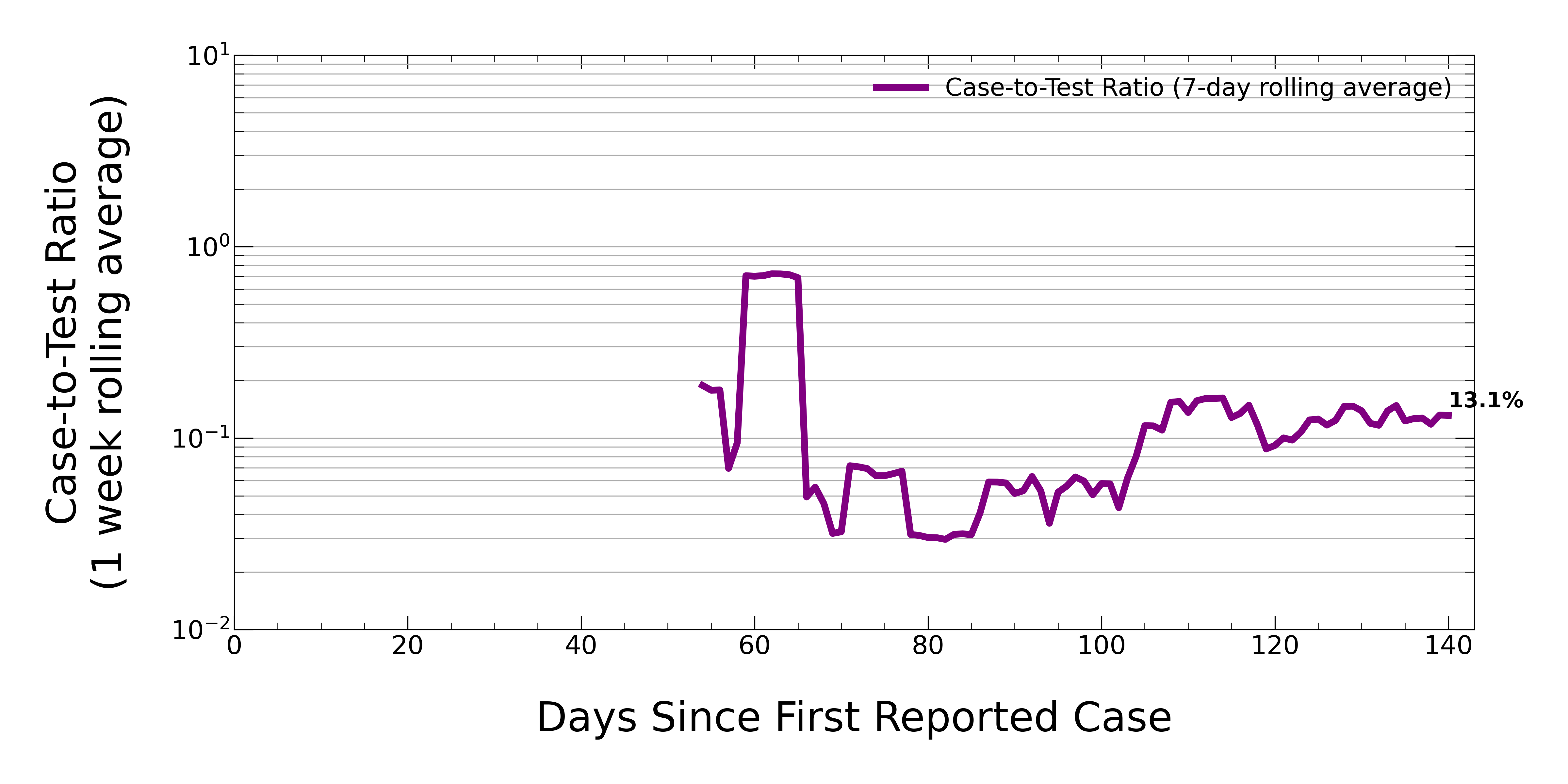
It’s time for another popcorn science. An oft-repeated claim, backed by few thoughts or facts, is that the U.S. Federal Government should take a cue from Main Street and run its budget like a household runs its budget. Households, so the claim goes, work within their constraints and don’t carry huge debt-to-income ratios. Why can’t the U.S. government be more like a household?
Let’s look at U.S. households first.
According to the U.S. Census Bureau, American households have a median income of about $49,777 and a mean (average) income of about $67,976 [1] (these numbers are pre-tax). According to statistics available on CreditCards.com, a self-described marketplace for obtaining a credit card, the average total debt carried by a household (including credit cards, mortgage, home equity, student loans, and other sources) $16,046 [2]. That means that, on average, the percent of income represented by household debt is 23.6%.
Let’s now look at the Federal Government, the representative of the People. In 2011, the total revenue of the U.S. Federal Government was $2,173.7 trillion (in 2009, where the above household statistics come from, the number was $2,105.0 trillion). The estimated debt for 2011 is $15,476 trillion (in 2009, the actual number was $11,875 trillion) [3]. Relative to per annum Federal income, this represents a debt/income ratio of 7.12, or 712%.
So if we treat the Federal Government like a typical American household, then it would certainly seem that this is a family living far outside of its means. The problem with this is that the analogy may not be apropos; can we really treat a national government with the same principles that we treat a single household? Are we even comparing the right numbers?
Since we’re talking about national numbers here regarding deficit, we might argue that the United States is worth more than simply the intake from Federal revenues. The Gross Domestic Product is a measure of the national income due to productivity, which is really a more accurate assessment of our national income. The GDP in 2011 is estimated to be $15,079 trillion (actual in 2009 was $14,258 trillion). If we compute the national debt/GDP ratio, we obtain 1.10, or 110%.
But again, is the statement that “the Federal Government should operate under the same constraints as a typical American household” a correct assumption? Is what is good for the house good for the nation?
A few weakpoints in this statement immediately become obvious. They lie in the differences between a typical American household and a Federal Government.
- The Federal Government must provide for the common defense. This includes raising an army, provisioning it, and paying it. A household does not have to shoulder its fractional burden of defense, except through taxes.
- The Federal Government must provide monies for public education, which are distributed to states and then to local schools. While household income is often taxed to pay for public education, the household does not need to directly provide the funds for books, teachers, buildings, etc. Part of that comes from the Federal Government. Households are not directly responsible for the education of their children, unless they home-school.
- The Federal Government provides support for those who cannot work and those who are retired through social financial programs like Medicare and Medicaid. Households rarely have to shoulder the entire burden of caring for an out-of-work or retired individual.
- The Federal Government provides support for risky ventures with a high-risk, high-payoff profile. Think scientific or educational research. Households rarely invest significant amounts of money in ventures which are not likely to succeed immediately, but may have long-term unintended benefits.
These are the things that immediately leap to mind as different between a typical household and a Federal Government.
What if we instead frame the issue as follows: what if the typical American household was structured more like the U.S.? How then might the typical American household look in terms of its debt/income ratio?
For this thought experiment, let us define the following parameters:
- The proportion of working individuals bringing in an average, single-person income from an external source will be as it presently exists in the United States – about 62%, according to Ref. [4]. These individuals represent the income to the household, taking the place of revenue sources for the Federal Government.
- The proportion of underage, non-working individuals (<18) will be as it is in the U.S. – about 26%. These are dependents, who also need to be educated.
- The proportion of retired, non-working individuals will be as it is in the U.S. – about 12%. These will be also be dependents, relying primarily in the income earners for support.
- The household will need to provide for defense, something usually provided by the local municipality. This will mean employing a security force (e.g. guards). The current proportion of the U.S. population which is participating in the military is about 10%.
- The household will need to provides its children with education. This means hiring a tutor. We can assume one tutor is needed for all the children in the household.
- We will assume that the security guard and the tutor make the current average amount of money for a military combat individual and a public school teacher: $16,000 [5] and $51,000 [6] (these are median salaries).
- We will assume that each person requires the average amount of food [7] and healthcare needed for their age bracket. Wage earners are between 18-65 years of age, children under 18, retirees over 65, security personnel are between 18-40, and teachers are anywhere between 18-65.
- Food cost, per year: (<18) we’ll assume the kids are about 9-11 years of age, so that’s about $150/month on the “Thrifty Plan”; for (18-65) the cost is about $160/month; for >65, the cost is about $150/month.
- Health costs: health care costs are often hidden from us by insurance plans, so we’ll have to make do with the best public numbers on typical household healthcare costs including some basic insurance plan. This averages out across every man, woman, and child in the U.S. to be $6,280 per person, per year; this represents the raw cost per person. However, people typically pay insurance premiums to a company that then provides benefits to them. If you don’t use the benefits, the average total cost of premiums is less than the average total cost estimated for raw healthcare each year. People under 18 cost on average $1350 per year in premiums; the average premium for people between 18-65 is about $3500. For people over 65, they receive Medicare or Medicaid but in our example we are assuming the family provides the cost of healthcare, and thus pays the premium, for the elderly. Thus we’ll underestimate the cost of >65 people at $5800, the premium cost per year for people aged 64.
Now we have our numbers. We need to build our family. Taking the proportions into account above, we want to achieve a number of people in a household that rounds the lowest number in any category to at least 1 person. You get about the right proportions if you construct the following minimum family:
- <18: 2 persons
- 18-65: 2 wage earners, 1 security person, 1 teacher/tutor
- >65: 1 person
This represents a 2 parent family with 2 children and 1 elderly parent to take care of, with their own personal security and a teacher for the child. This family represents the population distribution, and major outlay expenditures (security, health costs, education) of the U.S. Federal Government.
What will the income be, and what will the costs be? Let’s add it up!
- Income: Most two-earner family situations involve a male and female couple, so let’s assume that our household’s total income is the sum of the average male and female incomes. More females than males obtain Bachelor’s Degrees, so let’s assume that the female has a degree and thus earns $31k per year (median income). The male has some college and makes $35k per year. That totals $35k + $31k, or $66k. We’ll take the pre-tax number, since our taxes primarily are spent on social security and defense, which are the very things our model family will provide for themselves. [9]
Here are the outlays:
- Healthcare: Adding up the per-person cost for the kids, parents, and elder (premiums only), we get $15.5k
- Food: $9.2k per year
- Home: the per year cost of a 30-year home mortgage for a median U.S. home ($212k for the home and the land is the median price in 2011 [10]) is $7.1k
- The average yearly cost utilities, including gas, electric, phone, and some entertainment, is about $3000 [11]
- The family (2 kids, 2 parents, 1 elder) will have their own vehicles. Typical families in the U.S. own two vehicles. The average distance driven per year is 15,000 miles per vehicle. We’ll assume that there are 3 small sedans and 1 minivan in this household. That yields a cost per year for the sedans of $6300, including gas, maintenance, and other normal costs; for the minivan, it is $8900 per year [12]. That’s a total cost for transportation of $15,200 per year.
- Cost of salaries for teacher and security guard: we’ll set these at the current medians for military and teachers, or $16k and $51k. The security person is obviously underpaid; real military get benefits, like healthcare and food and housing. If we add the yearly costs of those into their salary to make it more reasonable, then we obtain a total security cost of $31.6k. The total cost of the teacher and the security person is $82.6k per year. We’ll assume the teacher uses their salary to buy books, supplies for teaching, food, an apartment, utilities, etc.
So what is the total outlay of this household per year? It’s $133.7k. That’s a cost-to-income ratio of 2.0, and a debt-to-income ratio of 1.0 (debt is outlays minus income). These costs don’t include other things, like supplies for the household (soap, towels, clothes, etc.) so clearly my little experiment is an underestimate of the cost to the family of providing for themselves like a normal household, plus paying directly for security and education.
Let’s compare that to the present Federal debt ratio (debt to GDP), 1.1. We have a household debt ratio of 1.0, about the same as that of our Federal Government. It seems that if a typical household were to assume things typically handled by the Federal Government, the debt-to-income picture would be VERY different.
Caveats and Conclusions
It would be easy to tinker with the model and change the ratio. A LOT of assumptions went into this. For instance, if both wage earners have Bachelor’s degrees, their combined salary increases by nearly 50% and their debt-to-income ratio drops to 0.6 from 1.0. You could argue that there is no way such a family would agree to pay $51k for a tutor. Fine. What is the average salary of a private tutor in the U.S.? A whopping $57k [13]. That $51k for a public-school teacher is looking like a bargain now. You could then argue they would just take in the tutor, pay their housing and food costs, etc. and try to drop the overall cost. That might work. Same for the security guard.
But the point here is that when you try to make a household look more like a nation, rather than the other way around (which is ridiculous) you begin to realize that there is a hidden cost to things we take for granted. We take for granted the cost of the public education of our children. We take for granted that the nation cares for its elderly, so that we assume less of a burden on the nuclear family. We take for granted the security that our taxes pay for. These are significant costs on a per household basis, and they are no less significant on a per nation basis.
I also neglected something very important in the household model: GROWTH. Economic growth is the single most important thing in the long-term survivability of a nation. If a nation is to grow, it must invest. Investment has risk, and even if it pays off it may not be for decades. Nations can make those kinds of decisions, but households rarely can. They tend to lean toward job security, stability, and short-term needs (food, utilities, etc.). They don’t think about what it would take to raise their annual income at 5% or 7% per year. What kinds of job risks would the wage earners need to take to secure that kinds of wage growth? Significant risks. The kinds of risks that people take out business loans for.
Taking into account growth means accepting more debt to gamble on risky investments that may pay off. That’s nowhere in my model. A nation can afford to take risks, because it has money invested in such diverse buckets in its budget, but a household cannot do that very often. Households, like nations, run up debt to achieve stability. They obtain a mortgage to buy a house they cannot actually afford now, under the promise of stable/increasing income over 30 years so that they CAN afford it later. They take our college loans to invest in their kids’ education, a cost they cannot afford now but which the kids can assume once they earn a degrees and thus a ticket to increasing wages. These are typical household risks, which zero out or pay off in some cases over very long periods of time (30-50 years).
So is it fair to compare a household and a nation? Not really. Nations and households have different priorities. They both take risks, but nations can afford to do that on larger scales and more frequently than can a household. If households assumed the cost of defense and education, in addition to healthcare, it would break their meager budgets. The same is true for a nation. But does that mean that governments should not provide these things?
What made the U.S. great was, in part, its public education and its national defense. If households had to provide these, with private tutors and their own militia, they too would assume a great deal of debt. There is no doubt that a debt-to-income ration of 1.0 or 1.1 can’t be sustained forever, but nobody says it has to be. The reality is that all entities assume some amount of risk from time to time to achieve larger goals. In a household, it’s a mortage or college loans or a business loan; in government, it’s defense spending, social programs to help those who cannot help themselves, education for all, and research and development. Achieving long-term stability is necessary, but we cannot confuse the short-term needs of a home with those of a nation.
[1] “FINC-01. Selected Characteristics of Families by Total Money Income in 2009,” http://www.census.gov/hhes/www/cpstables/032010/faminc/new01_001.htm
[2] Credit Card Industry Total Household Debt Statistics from 2009, http://www.creditcards.com/credit-card-news/credit-card-industry-facts-personal-debt-statistics-1276.php (at the recommendation of the site owner, who noted this article linked to their data, I provide an updated link to this data: http://www.creditcards.com/credit-card-news/credit-card-debt-statistics-1276.php)
[3] Budget Analysis, http://www.usgovernmentrevenue.com/#usgs302a
[4] http://2010.census.gov/2010census/data/
[5] http://www1.salary.com/E1-Recruit-Basic-Training-Army-Salary.html
[6] http://www1.salary.com/Public-School-Teacher-Salary.html
[7] http://www.cnpp.usda.gov/Publications/FoodPlans/2009/CostofFoodJan09.pdf
[8] http://www.ahrq.gov/research/ria19/expendria.htm and http://www.ahipresearch.org/pdfs/2009IndividualMarketSurveyFinalReport.pdf
[9] http://en.wikipedia.org/wiki/American_middle_class and http://en.wikipedia.org/wiki/Educational_attainment_in_the_United_States
[10] www.census.gov/const/uspricemon.pdf
[11] http://www.whitefenceindex.com/
[12] http://www.vtpi.org/tdm/tdm66.htm#_Toc18284946
[13] http://www.indeed.com/salary/Tutor.html
Photo from http://www.flickr.com/photos/moyix/174053226/sizes/z/in/photostream/




